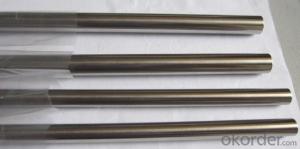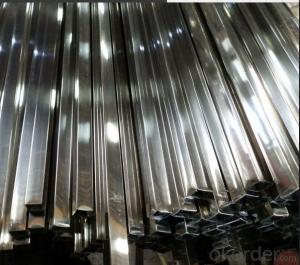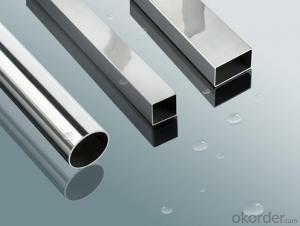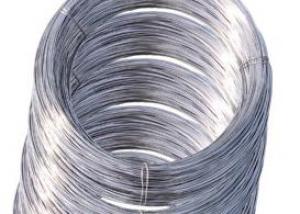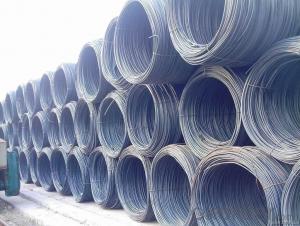stainless steel free cutting 303 stainless steel rods
- Loading Port:
- Shanghai
- Payment Terms:
- TT OR LC
- Min Order Qty:
- 1000 kg
- Supply Capability:
- 10000 kg/month
OKorder Service Pledge
OKorder Financial Service
You Might Also Like
Packaging Detail: | Bundle or Container or as per customers requirement. |
Delivery Detail: | within 25 days after we receive an irrevocable L/Cor 30% deposit |
ASTM A335 Seamless Alloy-Steel Pipe
Standard: BS 1139, BS 3059-2, JIS G3454-2007
Grade: 10#-45#, 15NiCuMoNb5, 10Cr9Mo1VNb
Detailed introduction to ASTM A335 seamless alloy steel pipe:
ASTM A335 seamless alloy steel pipe
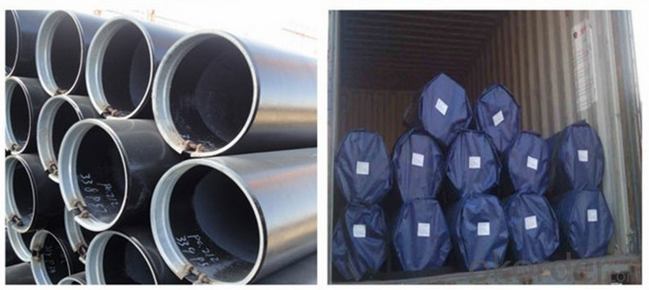
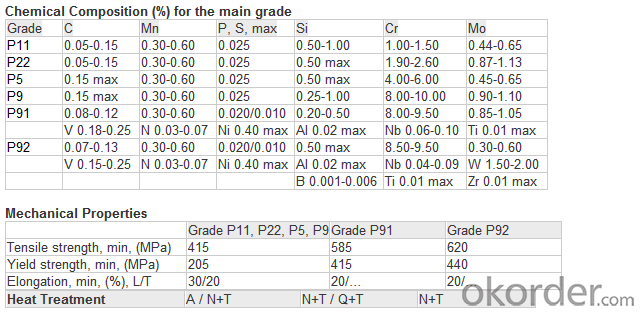
FAQ:
1) why you chose us ?
Professional Manufacturer and supplier of Steel pipe
More than 14 years’ professional producing experience
We can get the lowest ex-factory prices. The price are quite reasonable and it is lower than our commercial peers. also, we can guarantee the qualities of our products.
BV, ISO certificates and SGS test can be provided to assure the quality of our products.
2) Our minimum order quantity:
10 Metric Tons or one 20ft or 40ft Container.
3) How about the Delivery Time?
The steel pipe will be produced since we getting your deposit by T/T or Your original L/C. For normal size, some stocks in our factory now, we can supply once you need.
4)What kind of payment does your company support?
T/T, 100% L/C at sight, Cash, Western Union are all accepted.
5) Do you charge for the samples?
According to our company principle, we just charge for samples, you pay for the freight /courier charge.
6) Main market:
Mid East, South America, Africa, Southeast Asia, India etc
- Q: Are stainless steel pipes recyclable?
- Yes, stainless steel pipes are recyclable. Stainless steel is a highly sustainable material that can be recycled repeatedly without losing its properties or quality. Recycling stainless steel pipes helps conserve resources, reduce waste, and minimize environmental impact.
- Q: Can stainless steel pipes be used for gas applications?
- Yes, stainless steel pipes can be used for gas applications. Stainless steel is highly resistant to corrosion and can withstand high temperatures, making it a suitable material for transporting gases. Additionally, stainless steel pipes have excellent strength and durability, ensuring the safety and reliability of the gas system. They are commonly used in industrial, commercial, and residential applications where gas is being transported. However, it is essential to ensure that the stainless steel pipes being used meet the specific requirements and standards for gas applications to ensure proper installation and performance.
- Q: How can stainless steel and copper pipe be welded?
- Used to burn the brass pipe welding copper tube of copper which is often used for the installation and maintenance of brass stainless steel is rarely used because there are few people who will burn
- Q: Stainless steel pipe chamfering how to process?
- If the amount of larger or longer steel pipe, you can buy a dedicated handheld steel pipe chamfering tool, called "steel chamfering machine"". This is much more efficient than using a lathe
- Q: Can stainless steel pipes be used for brewery applications?
- Yes, stainless steel pipes can be used for brewery applications. Stainless steel is the preferred material for many breweries due to its excellent corrosion resistance, durability, and hygienic properties. Stainless steel pipes do not react with the ingredients in beer, ensuring the purity and taste of the final product. They are also easy to clean and maintain, reducing the risk of contamination. Additionally, stainless steel pipes can withstand high temperatures and pressures, making them suitable for various brewery processes such as brewing, fermentation, and storage. Overall, stainless steel pipes are a reliable and long-lasting choice for brewery applications.
- Q: Can stainless steel pipes be used for transportation of hazardous materials?
- Yes, stainless steel pipes can be used for the transportation of hazardous materials. Stainless steel is known for its excellent corrosion resistance and durability, making it suitable for safely containing and transporting various hazardous substances. Additionally, stainless steel pipes can withstand high temperatures and pressures, providing further reliability for transporting dangerous materials.
- Q: Can stainless steel pipes be insulated with polybutylene?
- No, stainless steel pipes cannot be insulated with polybutylene. Polybutylene is a type of plastic material that is commonly used as a water supply pipe. It is not suitable for insulating stainless steel pipes. Stainless steel pipes are already highly resistant to corrosion and do not require additional insulation for thermal purposes. If insulation is needed for stainless steel pipes, other materials such as fiberglass or foam pipe insulation can be used.
- Q: Can stainless steel pipes be used for architectural sculptures?
- Certainly, architectural sculptures can utilize stainless steel pipes. Stainless steel, being a versatile material, provides durability, corrosion resistance, and an elegant appearance. These attributes make it a favored option for sculpting and constructing architectural elements. By manipulating stainless steel pipes, artists and architects can manifest their imaginative concepts in diverse forms and dimensions. Furthermore, the ability of stainless steel to endure extreme weather conditions and its minimal upkeep needs render it appropriate for outdoor installations. In conclusion, when it comes to architectural sculptures, stainless steel pipes present a dependable and aesthetically pleasing choice.
- Q: Can stainless steel pipes be insulated with polyethylene naphthalate?
- Indeed, polyethylene naphthalate (PEN) is a viable option for insulating stainless steel pipes. PEN, a top-notch thermoplastic material, boasts impressive insulation capabilities. Its low thermal conductivity qualifies it to effectively insulate pipes, guarding against heat loss or gain. Moreover, PEN exhibits commendable resistance to chemicals, moisture, and UV radiation, making it a robust choice for pipe insulation. Nevertheless, it is crucial to verify the compatibility of the chosen insulation material with the unique application and operating conditions to guarantee optimal performance and durability.
- Q: Can stainless steel pipes be insulated with silicone?
- Indeed, it is possible to insulate stainless steel pipes using silicone. Silicone proves to be a highly adaptable substance capable of enduring a vast spectrum of temperatures, rendering it ideal for the purpose of insulating pipes that transport either hot or cold fluids. Typically, silicone insulation is obtainable in the form of sleeves or wraps, which can be effortlessly applied to the surface of the pipe. This insulation furnishes exceptional thermal insulation, thwarting any loss or gain of heat from the pipe and thereby enhancing energy efficiency. Furthermore, silicone insulation exhibits resistance towards moisture, chemicals, and UV radiation, guaranteeing its durability and long-standing efficacy.
Send your message to us
stainless steel free cutting 303 stainless steel rods
- Loading Port:
- Shanghai
- Payment Terms:
- TT OR LC
- Min Order Qty:
- 1000 kg
- Supply Capability:
- 10000 kg/month
OKorder Service Pledge
OKorder Financial Service
Similar products
Hot products
Hot Searches
Related keywords
